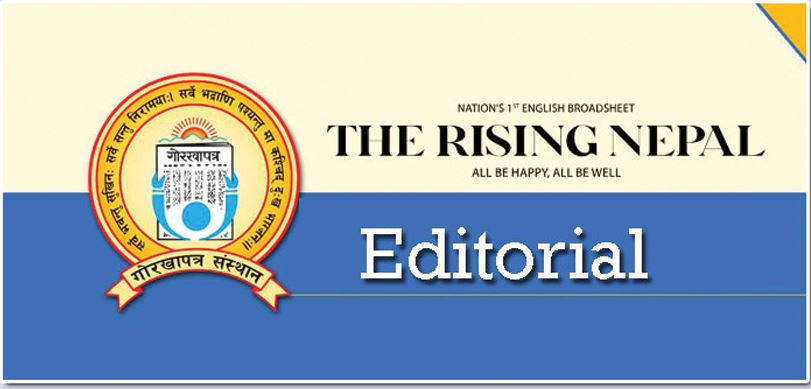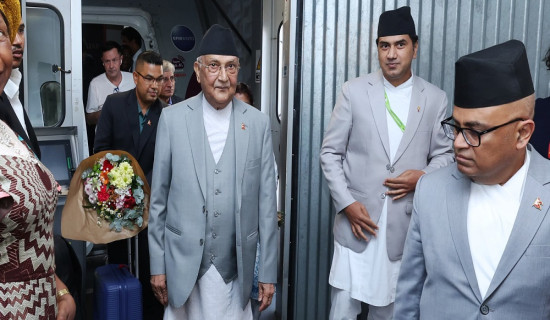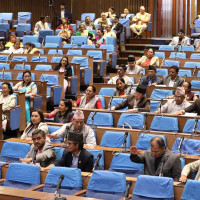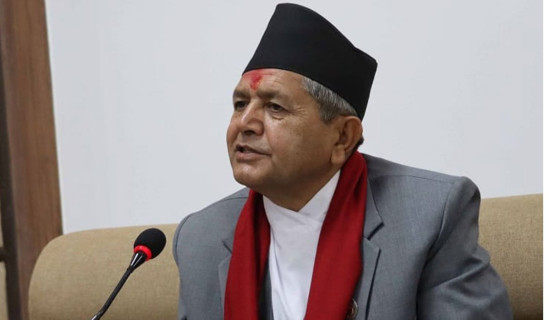- Monday, 30 June 2025
Self-reliance On Rice
Nepal’s Tarai region is known as the breadbasket, contributing around 71 percent of the paddy production. The southern plains contain only 23 per cent of the country’s landmass, but they are fertile and easily employ modern technology, with access to irrigation facilities and transportation networks. But, the hilly region that accounts for 68 per cent of land area provides a contrasting geography that is not favourable for the production of a high amount of agricultural produce. The hills contribute 26 per cent of paddy and 71 per cent of maize to the country. However, over 13 million people in hilly and mountainous regions have to rely on terraced farming that requires planting and other agricultural activities by hand. The application of modern equipment is difficult because of the complex topography.
Pictures of terraced farming look beautiful but farmers have to work hard to shape the land, conserve soil and manage the water flow on the slope. But the people are unable to produce food in the desired quantity in the difficult terrain. The declining agricultural productivity has resulted in food insecurity in the hilly and mountainous regions. This indeed calls for an increase in the production of agro products, which demands increased investment in agriculture and climate-adaptation farming strategies, among others. According to a news report of this daily, the country annually needs around 7 million tonnes of rice but there is a shortfall of about 1 million tonnes. By mid-June 2025 of the current fiscal year, 753,000 tonnes of rice, paddy and paddy seeds worth Rs. 38.94 billion were imported.
Against this backdrop, the country marked the 22nd National Paddy Day and Paddy Plantation Festival on Sunday (Asar 15) with the theme ‘Intensification in Rice Crops: Food Security and Self-Reliance’. It has focused on sustainable rice production, modernisation of farming practices and adoption of climate-resilient technologies. The day marks the social, cultural, economic and religious importance of rice. With climate change posing a threat to every aspect of human life, the agriculture sector is also under intense pressure to adopt climate-friendly technology and spread awareness of the negative consequences of climate change among farmers. Over the years, there has been steady progress in the agro sector. More than 140 varieties of rice have been developed and a mechanism has been set up to distribute the hybrid seeds to all three levels of government.
Paddy was planted on an area of 1.42 million hectares of land in the current fiscal year 2024/25, with the production of 5.955 million tonnes of rice. The average productivity was 4.19 tonnes per hectare. Despite the decline in the plantation areas, the country witnessed the highest average productivity this fiscal. Still, challenges lie in attaining self-reliance on rice. There is a dependency on fine and aromatic varieties of rice, not widely produced inside the country. To increase rice production, the government has taken a policy to expand the area of chaite paddy cultivation to 200,000 hectares of land from the existing 110,000 hectares.
For this, farmers have been provided fertilisers, quality seeds and the latest research-based technologies under the Chaite rice promotion programme implemented in 58 municipalities of 18 districts. It seeks to develop the entire value chain of rice through 21 rice zones and five superzones. The government's strategy to enhance the production and productivity of rice needs to be more focused and coordinated at the three levels of government. The authorities must work for the timely availability of fertilisers, improved seeds and irrigation.








-square-thumb.jpg)








